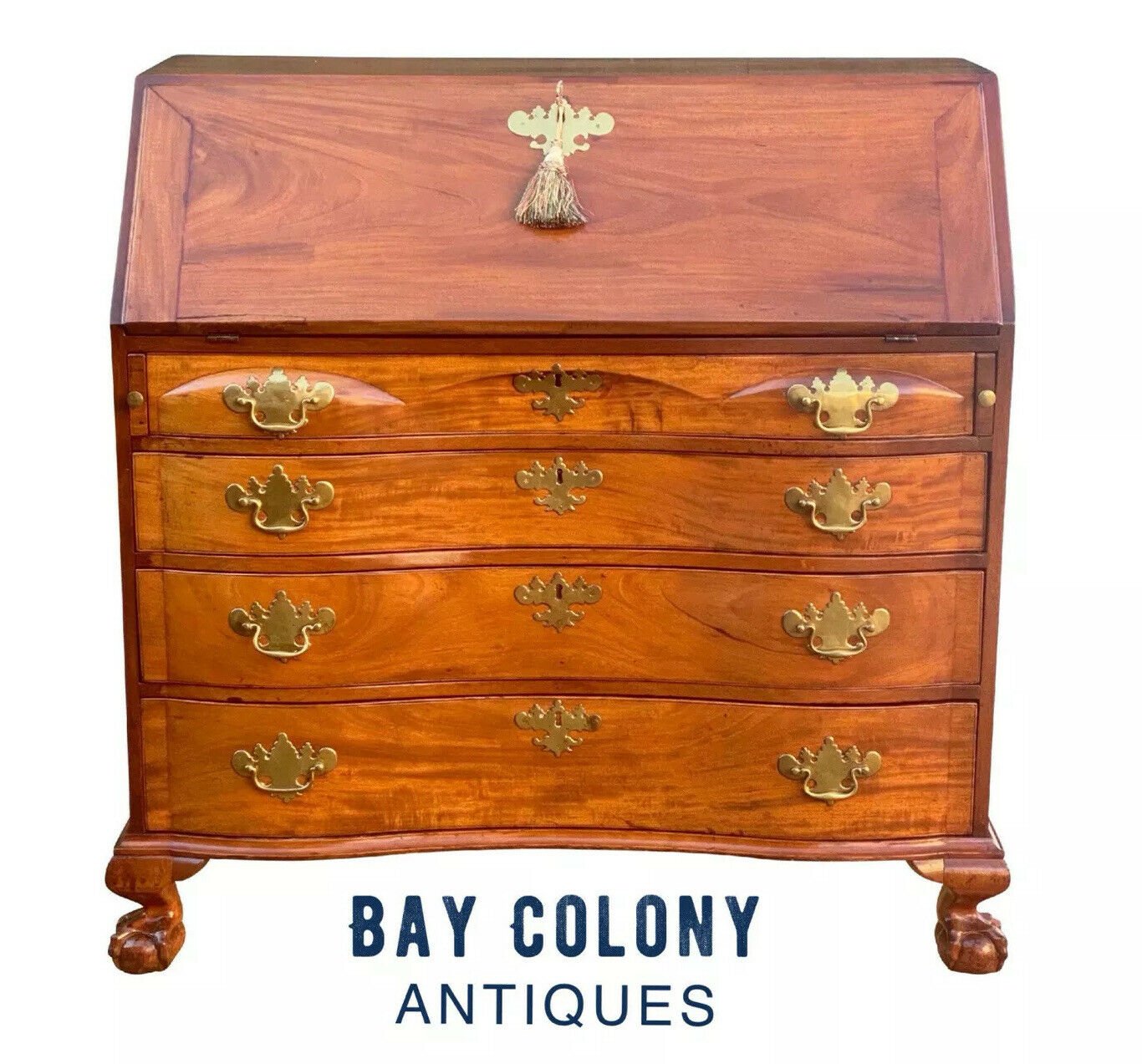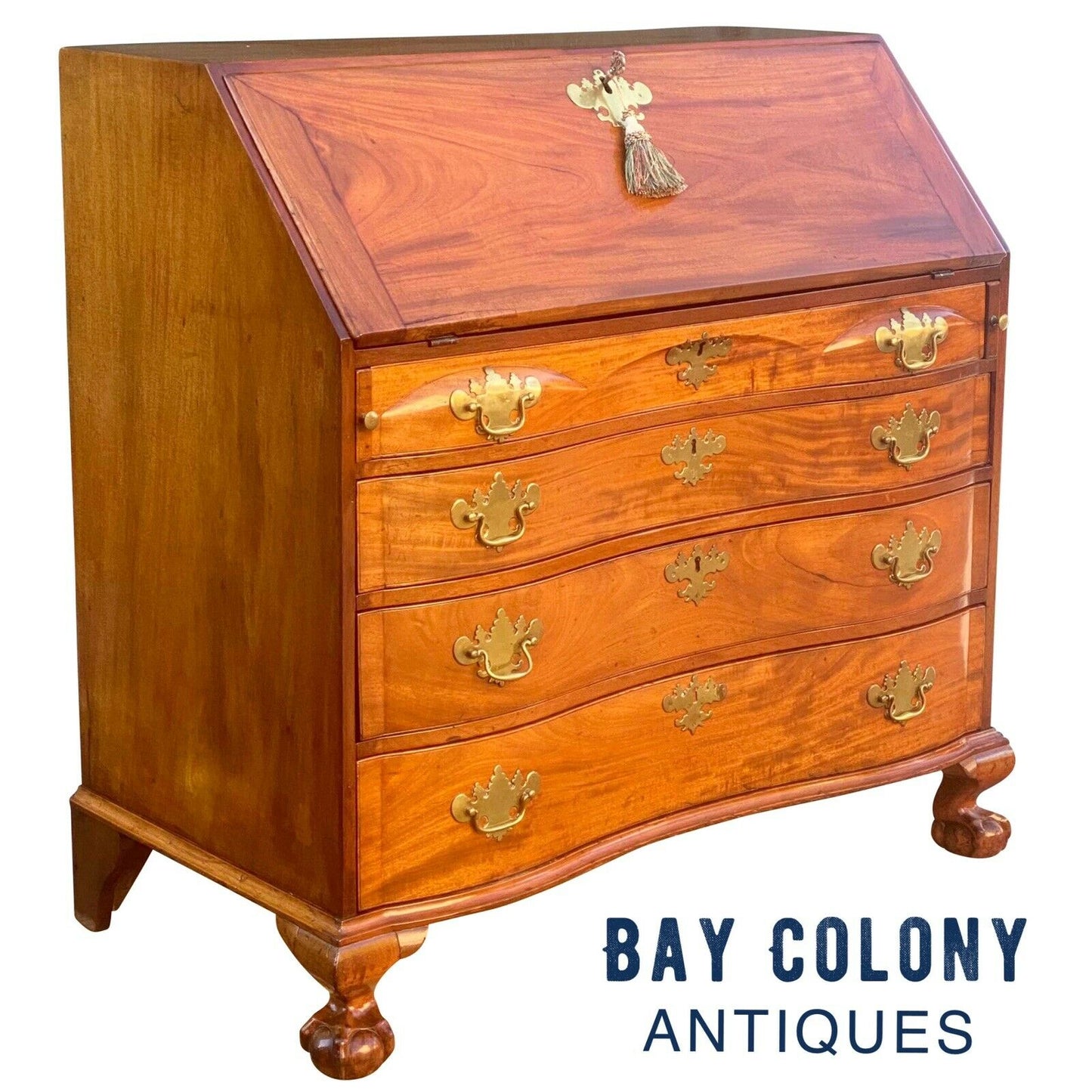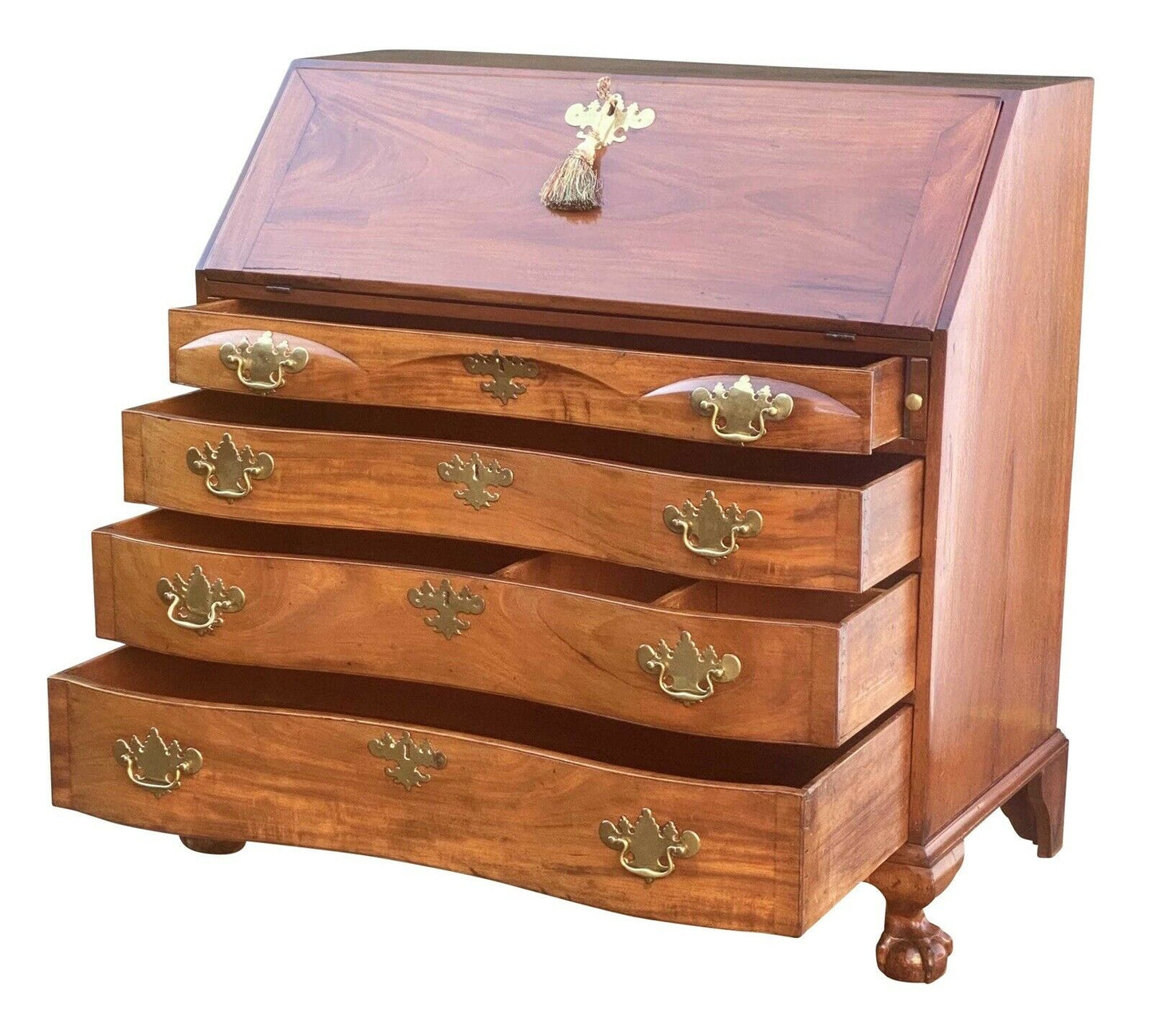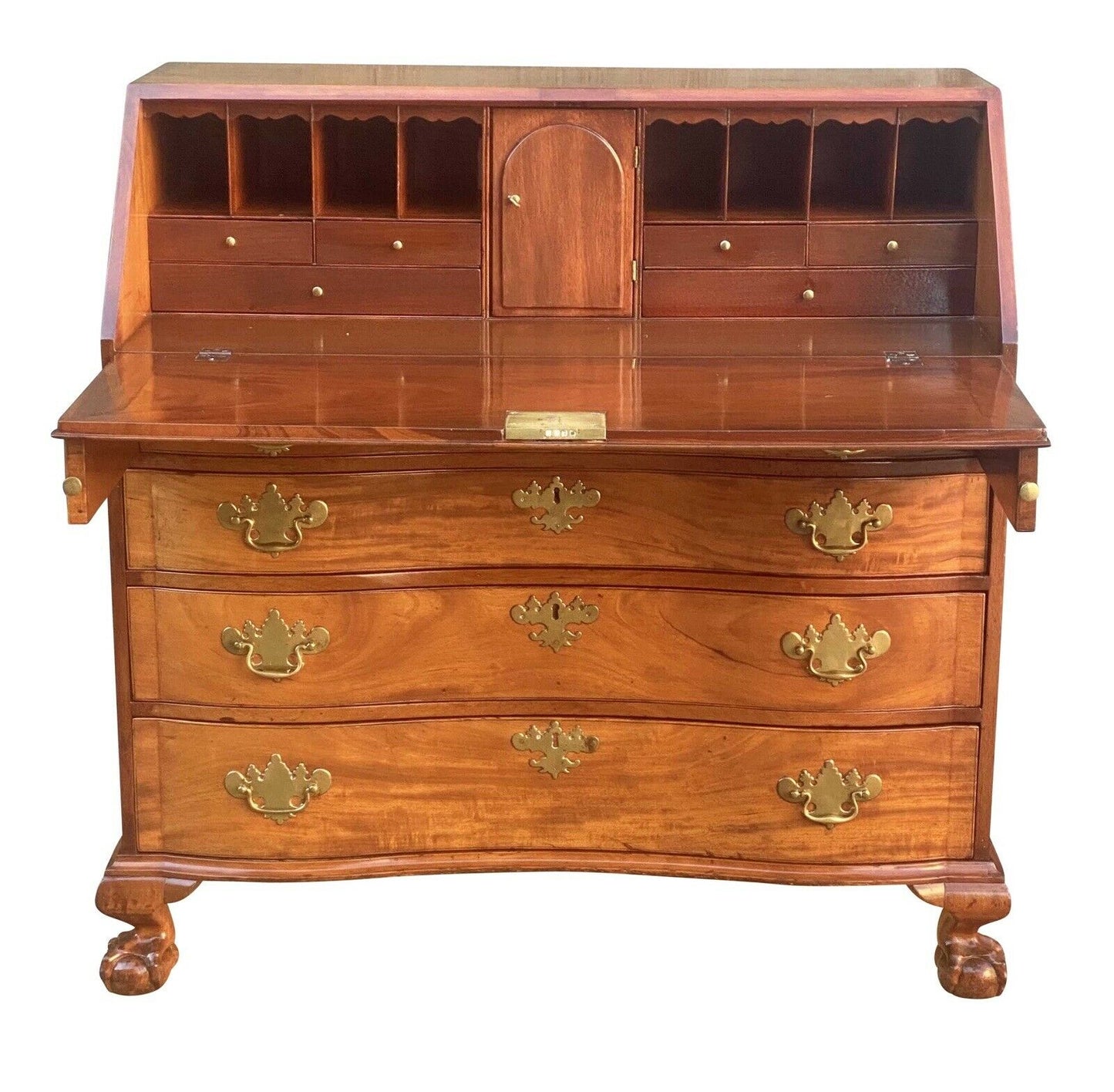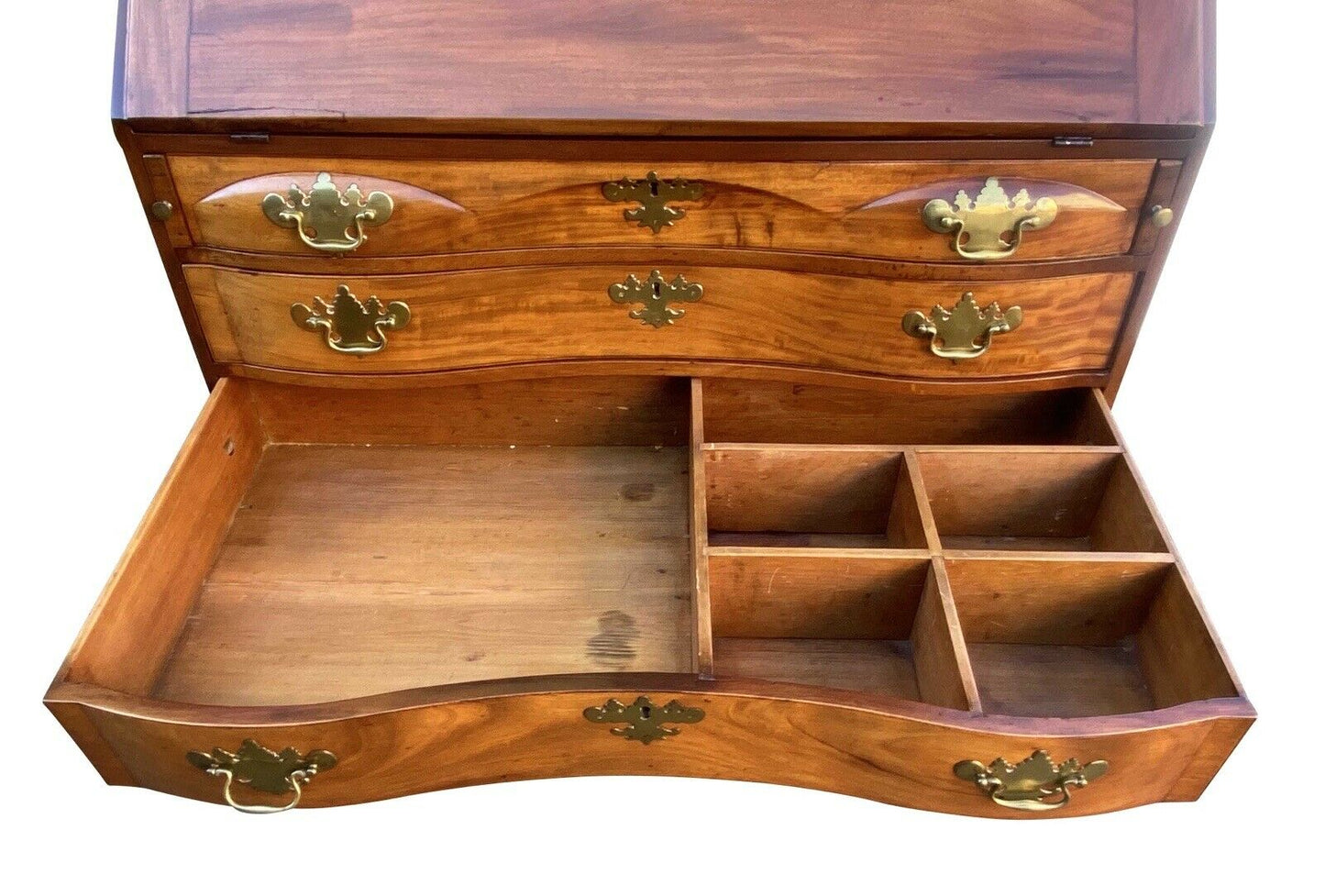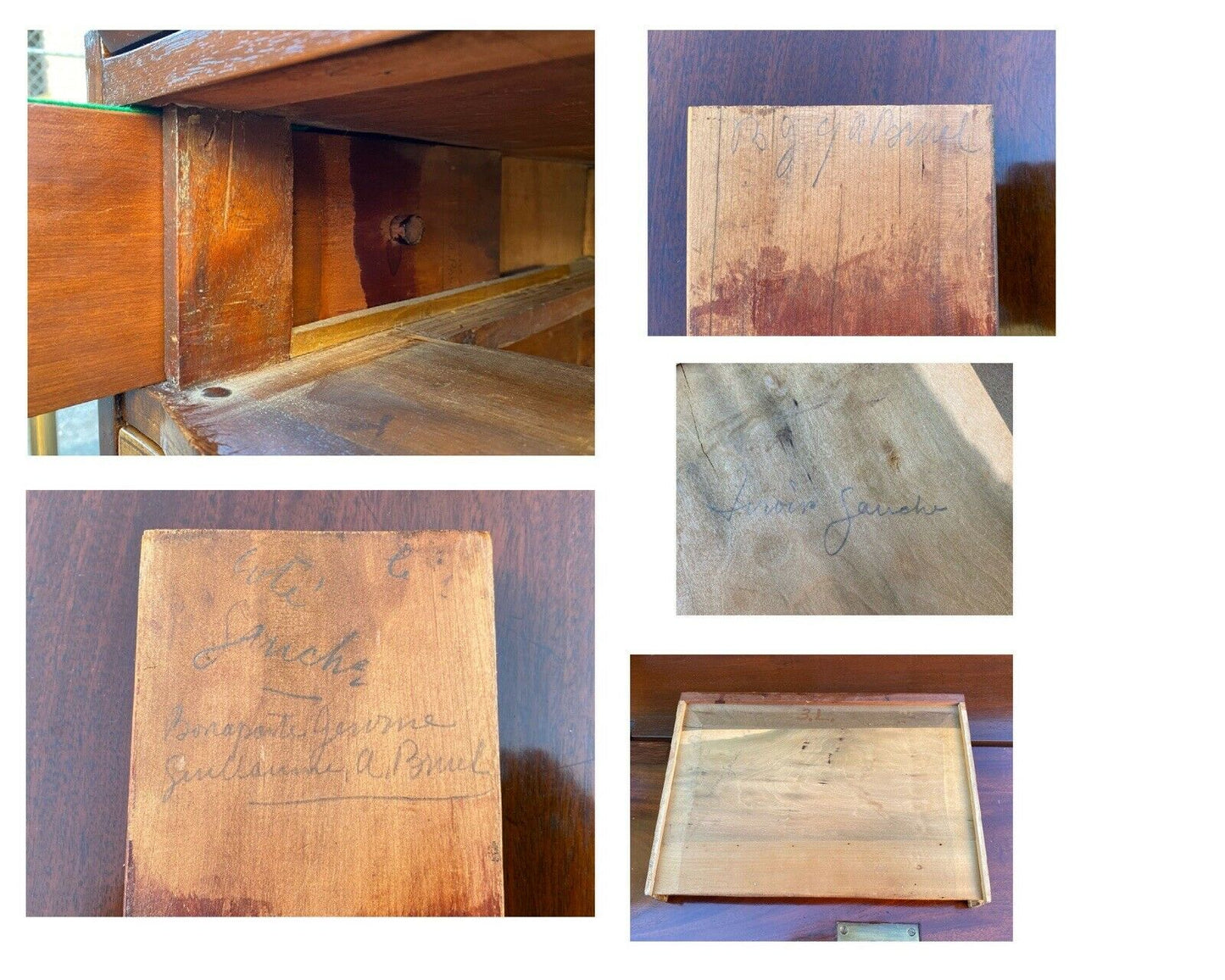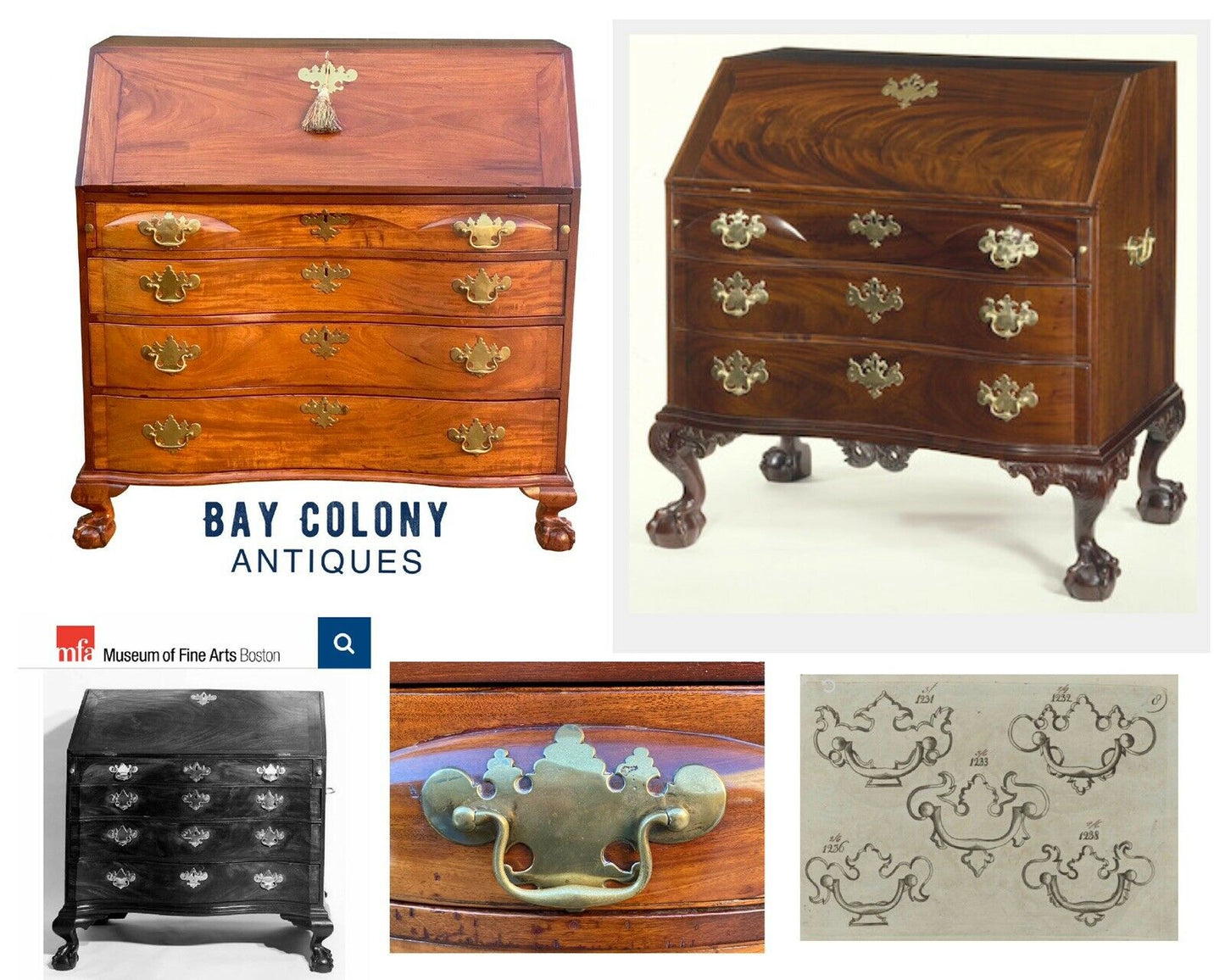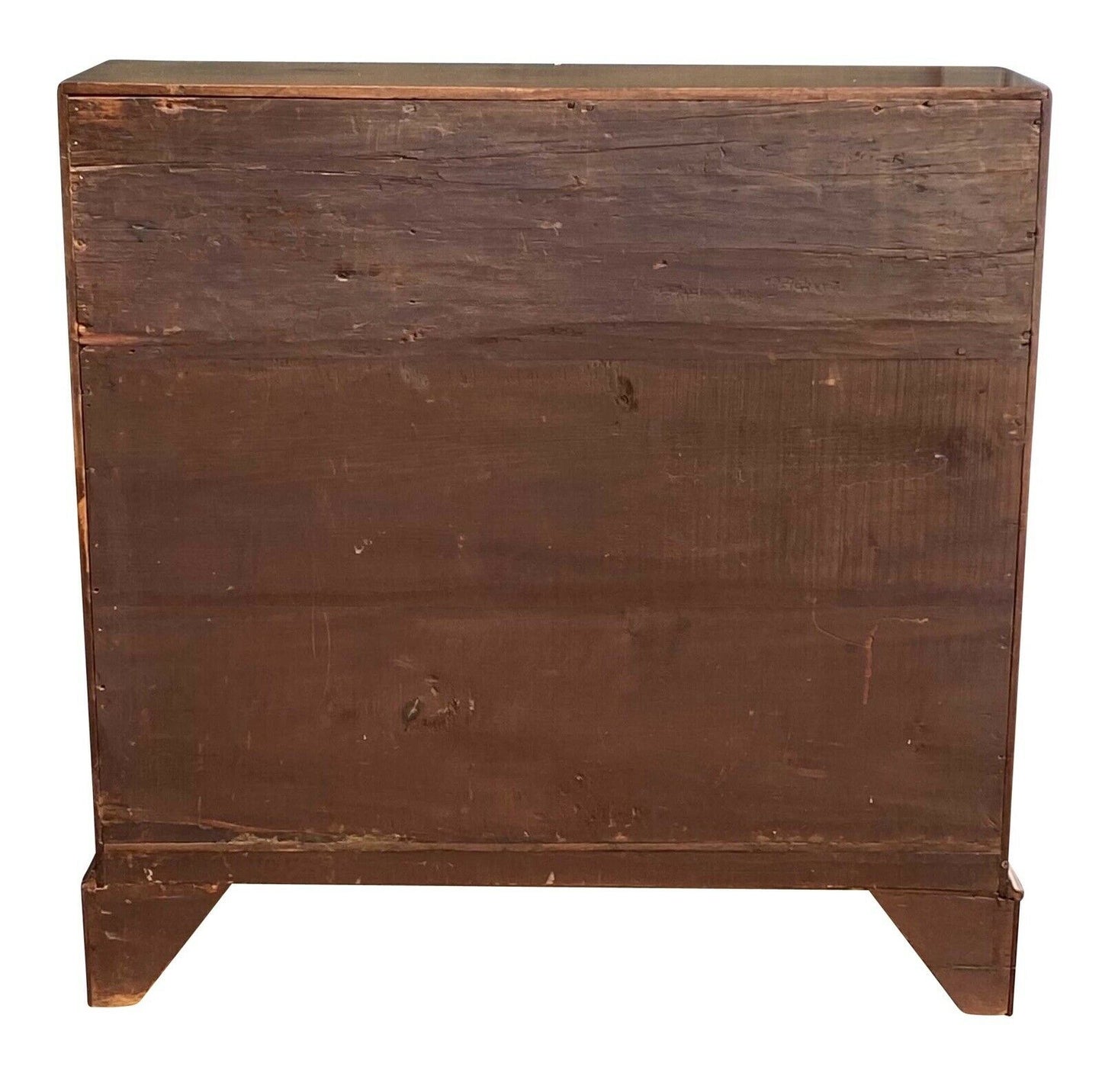Bay Colony Antiques
18th C Antique Boston Mahogany Chippendale Oxbow Desk W/ Ball & Claw Feet
18th C Antique Boston Mahogany Chippendale Oxbow Desk W/ Ball & Claw Feet
Couldn't load pickup availability
|
With our highest compliments and utmost honors, Bay Colony Antiques is extremely proud to offer for sale this fantastic 18th century antique Chippendale Mahogany Boston oxbow desk. This is one of the absolute finest oxbow desks we’ve had the pleasure of offering lately and are sure this will excite our collectors across the globe. This is a superior formed desk with a magnificently executed serpentine or oxbow front. This oxbow form was mainly used in Boston at the end of the 18th century and we’ve attached a few photos of similar desks in public collections across the country. The desk to the right of our example is purportedly made by John Austin of Boston MA and is currently in the Winterthur collection. Note the almost identical proportions of the swell fronts with a clean pronounced edge & dramatic center depression. The case is formed in the same manner with the upper drawer inset between the lopers. Obviously the legs are very different ,but it would not be uncommon for the legs to have been crafted by an independent carver. The desk pictured below ours is in the MFA in Boston and features the exact opposite curves of the one being offered here. This is commonly referred to as a reverse serpentine and was also practiced in Boston in the 18th century. The desk at the MFA is fitted with ziggurat formed brasses nearly identical to the ones on this desk being offered for sale here. These were imported from England and we’ve attached a picture from an 18th century trade catalog that covered everything from brass bells to hinges & pulls. These would have been a costly set of brasses and are really only found on top tier cabinet work. In our close up photo of the pulls you can see small imperfections from the primitive casting process in which these were made. The lid opens to reveal 6 interior drawers with two standard drawers above one long drawer on each side. The desk has a total of 8 pigeon holes with a tombstone carved center door. The center door has two smaller drawers inside and one hidden drawer above concealed in the scrolling. There’s a repair to the wood surrounding the right hinge of the lid but it’s easy to glance over and understandable after roughly 250 years. The lower case has four drawers with lock in the top two and the bottom two drawers never accepted locks. The third drawer has a compartmentalized interior that splits the drawer down the middle and into 5 smaller sections on the right side. The ball and claw feet are well executed but are not an overly ambitious design. The base molding mirrors the curves of the case and it is thumb molded achieving a flawless transition & a clean aesthetic. We are always looking for cabinet maker’s signatures & pencil script or anything that can help us attribute a certain area or maker. We thoroughly enjoy furthering the study of early American furniture and placing American treasures in the finest American homes. It’s not by any means common, but slant lid desks like this sometimes have hidden compartments so we try to give everything as thorough of an inspection as possible. We’ve found some hidden compartments behind the lopers in the past so we always try to remove them and take a peek inside if possible. The left loper has old graphite script that is hard to make out but reads “Bonaparte Jerome Guillaume ________ (a Bruel?) There is some other old script that that is present on the same drawer and the bottom panel of another and the Bruel name is repeated on the side of another drawer. The desk was crafted CA 1770/1780 which would predate Napoleon's brother Jerome’s arrival to the US but interestingly enough his son of the same name was involved In Massachusetts while studying at Harvard ~1820. He eventually married Susan May Williams who came from a very wealthy Rockport, MA family so the desk may have been inherited by him that way. Jerome had two sons with his oldest serving in the American & French armies. His eldest son was also named Jerome Bonaparte and he spent a good amount of time in Massachusetts including his final years until he passed away in Prides Crossing on the North Shore. Napoleon's brother Jerome did spend some time in Boston but mainly just during his wedding tour with his new bride. We don’t believe the desk would have belonged to him because he would have been accustomed to the finest French furniture and the signatures don’t match up. We couldn’t access the letters between his son, the American Jerome Bonaparte, and general Robert E Lee. The letters now belong to the University of Maryland but we’d be interested to learn if this could be of his hand if anybody has access to them. We’d love to divert more time to this just to satisfy our own curiosity but we’re completely backed up with new inventory and have spent far too much time already learning the fascinating story of the American Bonapartes. The desk measures 43 1/2” wide x 23” deep x 42” tall. The writing surface measures 39 1/2” wide x 23” deep.
|
Share
